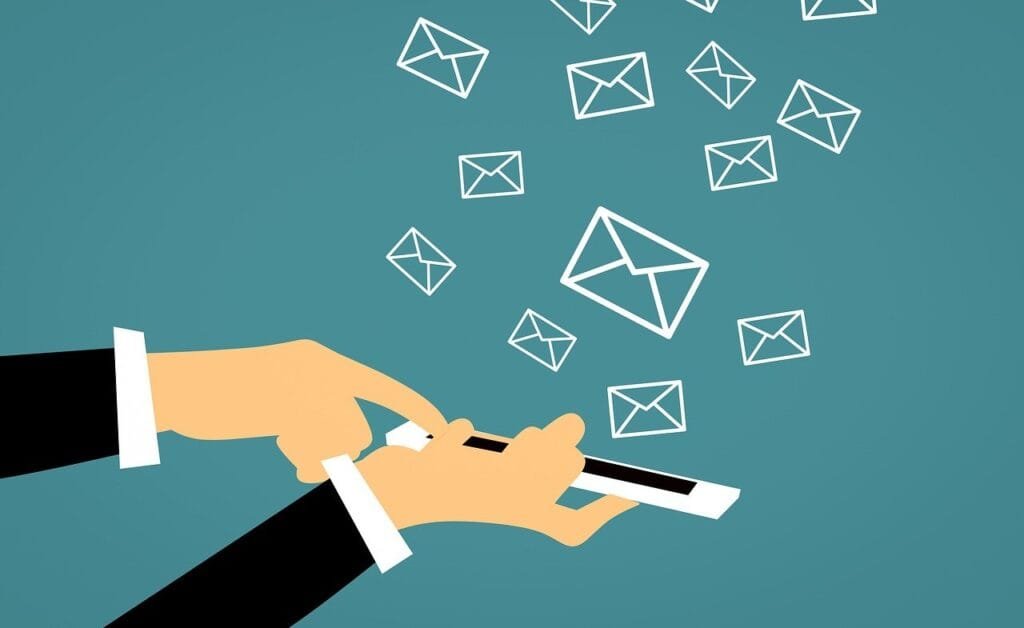- 1. What Is the ROI of Email Marketing in 2024?
- 2. How Important Is Email for Small Businesses?
- 3. Do Consumers Prefer Receiving Promotional Emails?
- 4. How Frequently Do Marketers Send Emails?
- 5. What Are the Open Rates for Welcome Emails?
- 6. How Effective Are Segmented Email Campaigns?
- 7. What Impact Do Personalized Subject Lines Have on Open Rates?
- 8. How Do Transactional Emails Perform Compared to Regular Marketing Emails?
- 9. What Is the Effect of Videos in Emails?
- 10. How Important Is Mobile Optimization for Email Campaigns?
- 11. What Is the Average Open Rate Across Industries?
- 12. How Effective Are Email Click-Through Rates?
- 13. What Impact Do Single Call-to-Action Emails Have?
- 14. How Effective Are Abandoned Cart Emails?
- 15. Do Consumers Prefer Email for Brand Communication?
- 16. Are Brands Increasing Their Email Marketing Budgets?
- 17. How Does Email Marketing Compare to Social Media for Customer Acquisition?
- 18. How Effective Are Automated Email Campaigns?
- 19. How Do Personalized Subject Lines Affect Open Rates?
- 20. How Does Email Frequency Impact Unsubscription Rates?
- 21. When Is the Best Time to Send Emails for Higher Open Rates?
- 22. How Effective Are Triggered Emails?
- 23. What Percentage of Total Revenue Comes from Email Marketing?
- 24. How Do Social Sharing Buttons Impact Email Engagement?
- 25. What Is the Average Email Bounce Rate?
- 26. How Do Images Affect Email Click-Through Rates?
- 27. When Is the Best Time of Day to Send Emails?
- 28. How Do Email Purchases Compare to Other Channels?
- 29. What Are the Benefits of Drip Campaigns?
- 30. How Does Email Marketing's Average Order Value Compare to Social Media?
- We got all the latest Marketing Stats here:
In the dynamic world of digital marketing, email remains a cornerstone for reaching and engaging with audiences. As we step into 2024, it’s crucial to understand the latest trends and statistics in email marketing to craft a strategy that not only resonates with your audience but also drives substantial results. This comprehensive guide explores key email marketing statistics that will shape your 2024 strategy, helping you to stay ahead of the curve and make informed decisions.
In this article, we’ll delve into 30 key statistics that highlight the current state of email marketing, providing you with actionable insights to refine your approach and achieve better results. From understanding ROI and open rates to leveraging personalization and automation, these statistics will guide you in crafting a strategy that meets your marketing goals and exceeds your audience’s expectations.
1. What Is the ROI of Email Marketing in 2024?

Email marketing delivers an ROI of 4200%, equating to $42 for every $1 spent.
The return on investment (ROI) for email marketing is astonishingly high. For every dollar spent, you can expect an average return of $42. This impressive statistic underscores the effectiveness of email marketing in driving revenue and highlights why it remains a preferred choice for marketers. To maximize ROI, focus on crafting compelling content, segmenting your audience, and optimizing your campaigns through effectiveness of email marketing.
2. How Important Is Email for Small Businesses?
81% of small businesses rely on email as their primary customer acquisition channel.
Email marketing is particularly crucial for small businesses, with 81% relying on it as their main method for acquiring customers. This reliance is due to the cost-effectiveness and direct nature of email marketing, allowing small businesses to reach their target audience without the need for substantial advertising budgets. To leverage this, small businesses should focus on building robust email lists and creating targeted, value-driven content.
3. Do Consumers Prefer Receiving Promotional Emails?
49% of consumers say they would like to receive promotional emails from their favorite brands.
Nearly half of all consumers express a preference for receiving promotional emails from brands they love. This statistic highlights the importance of maintaining a regular email presence with your audience. To meet consumer expectations, ensure your promotional emails offer genuine value, such as exclusive discounts, early access to sales, or useful information about your products and services.
4. How Frequently Do Marketers Send Emails?
35% of marketers send their customers 3-5 emails per week.
Consistency is key in email marketing, with 35% of marketers choosing to send 3-5 emails per week. This frequency helps keep your brand top-of-mind without overwhelming your subscribers. However, finding the right balance is crucial. Monitor your engagement metrics and subscriber feedback to adjust your email frequency to suit your audience’s preferences.
5. What Are the Open Rates for Welcome Emails?
Welcome emails have an average open rate of 82%.
Welcome emails boast an impressive open rate of 82%, making them a critical touchpoint in your email marketing strategy. These emails set the tone for your relationship with new subscribers, so it’s essential to make a strong first impression. Ensure your welcome email is friendly, informative, and provides value, such as a special offer or useful information about your brand.
6. How Effective Are Segmented Email Campaigns?
Segmented email campaigns have a 14.31% higher open rate than non-segmented campaigns.
Segmenting your email list can significantly boost your open rates by 14.31%. Segmentation allows you to tailor your content to specific groups within your audience, making your emails more relevant and engaging. Common segmentation criteria include demographics, purchase history, and engagement levels. By sending targeted emails, you can improve both open rates and overall campaign performance.
7. What Impact Do Personalized Subject Lines Have on Open Rates?
Personalized subject lines generate a 50% higher open rate.
Personalization is a powerful tool in email marketing. Emails with personalized subject lines see a 50% increase in open rates compared to generic subject lines. Including the recipient’s name or referencing their past interactions with your brand can make your emails stand out in a crowded inbox. Use personalization strategically to create a more engaging and relevant experience for your subscribers.
8. How Do Transactional Emails Perform Compared to Regular Marketing Emails?
Transactional emails are opened 8 times more than regular marketing emails.
Transactional emails, such as order confirmations and shipping notifications, have an open rate that is eight times higher than regular marketing emails. These emails are anticipated and valued by recipients, providing an excellent opportunity to engage with your customers. Consider incorporating marketing messages or product recommendations within transactional emails to leverage their high open rates.
9. What Is the Effect of Videos in Emails?
Emails with videos see an increase in click-through rates by 300%.
Incorporating videos in your emails can significantly boost engagement, with click-through rates increasing by 300%. Videos are an effective way to convey complex information quickly and engagingly. Whether it’s a product demo, customer testimonial, or a behind-the-scenes look at your company, videos can capture your audience’s attention and drive them to take action.
10. How Important Is Mobile Optimization for Email Campaigns?

Mobile-friendly emails have a 15% higher click-through rate.
With the majority of emails now being opened on mobile devices, mobile optimization is crucial. Emails that are designed to be mobile-friendly achieve a 15% higher click-through rate. Ensure your emails are responsive, with easily readable text, clear calls-to-action, and images that load correctly on mobile screens. This will enhance the user experience and increase engagement.
11. What Is the Average Open Rate Across Industries?
The average email open rate across industries is 21.33%.
Understanding the average open rate across industries provides a benchmark for evaluating your email campaign performance. An open rate of 21.33% indicates a good level of engagement. However, it’s essential to compare this average with your own industry-specific benchmarks to get a clearer picture. Consistently monitoring and analyzing your open rates will help you identify areas for improvement and optimize your email strategy.
12. How Effective Are Email Click-Through Rates?
The average click-through rate (CTR) for email campaigns is 2.62%.
The click-through rate is a vital metric that indicates how effectively your email content prompts recipients to take action. An average CTR of 2.62% is a good benchmark, but your goal should be to continually improve this rate. To boost CTR, focus on creating compelling calls-to-action, relevant content, and engaging visuals. A/B testing different elements of your emails can also provide insights into what drives higher engagement.
13. What Impact Do Single Call-to-Action Emails Have?
Emails with a single call-to-action (CTA) increase clicks by 371% and sales by 1617%.
Simplicity can be incredibly powerful in email marketing. Emails that feature a single, clear call-to-action see a staggering 371% increase in clicks and a 1617% increase in sales. This statistic highlights the importance of having a focused message. Ensure that your CTA stands out and is easy to understand, guiding your readers towards a specific action without distractions.
14. How Effective Are Abandoned Cart Emails?
Abandoned cart emails have an average open rate of 45%.
Abandoned cart emails are highly effective in recovering lost sales, with an impressive open rate of 45%. These emails remind customers of the items they left behind and can include incentives like discounts or free shipping to encourage them to complete their purchase. Setting up automated abandoned cart email sequences can significantly boost your conversion rates and recover potential revenue.
15. Do Consumers Prefer Email for Brand Communication?
48% of consumers prefer to communicate with brands via email.
Nearly half of all consumers prefer email as their primary method of communication with brands. This preference underscores the importance of maintaining a strong email presence. To cater to this preference, ensure your emails are timely, relevant, and provide value. Regularly engage with your audience through newsletters, promotional offers, and personalized updates to keep them connected to your brand.

16. Are Brands Increasing Their Email Marketing Budgets?
37% of brands are increasing their email marketing budgets.
With the proven effectiveness of email marketing, it’s no surprise that 37% of brands are planning to increase their email marketing budgets. Investing in email marketing allows brands to enhance their campaigns through better tools, more sophisticated automation, and higher quality content. As you plan your budget for 2024, consider allocating more resources to email marketing to capitalize on its high ROI.
17. How Does Email Marketing Compare to Social Media for Customer Acquisition?
Email marketing is 40 times more effective at acquiring new customers than Facebook or Twitter.
Email marketing outperforms social media when it comes to customer acquisition, being 40 times more effective than Facebook or Twitter. This statistic highlights the importance of prioritizing email marketing in your strategy. Focus on growing your email list through various channels, such as social media promotions, website sign-ups, and lead magnets, to maximize your customer acquisition efforts.
18. How Effective Are Automated Email Campaigns?
Automated emails generate 320% more revenue than non-automated emails.
Automation can significantly enhance the effectiveness of your email campaigns, generating 320% more revenue compared to non-automated emails. Automated emails, such as welcome series, drip campaigns, and re-engagement emails, ensure timely and relevant communication with your audience. Implementing automation not only saves time but also increases engagement and conversions.
19. How Do Personalized Subject Lines Affect Open Rates?
Emails with personalized subject lines are 26% more likely to be opened.
Personalization continues to be a key factor in email marketing success. Emails with personalized subject lines are 26% more likely to be opened. Personalization goes beyond just using the recipient’s name; it can include references to past purchases, personalized offers, or content tailored to the recipient’s interests. Investing in personalization strategies can significantly enhance your email engagement.
20. How Does Email Frequency Impact Unsubscription Rates?
45% of email recipients say they would unsubscribe if emails appear too frequently.
Finding the right email frequency is crucial to maintaining your subscriber base. If emails are sent too frequently, 45% of recipients may choose to unsubscribe. It’s important to strike a balance that keeps your audience engaged without overwhelming them. Pay attention to your email performance metrics and subscriber feedback to determine the optimal frequency for your audience.
21. When Is the Best Time to Send Emails for Higher Open Rates?

Emails sent on Tuesdays have the highest open rates at 18%.
Timing plays a crucial role in the success of your email campaigns. According to recent data, emails sent on Tuesdays achieve the highest open rates, with an average of 18%. This statistic suggests that mid-week is a prime time for reaching your audience. To optimize your email timing, consider testing different days and times to see what works best for your specific audience, but starting with Tuesdays can be a strong initial strategy.
22. How Effective Are Triggered Emails?
Triggered emails have a 70.5% higher open rate compared to regular email campaigns.
Triggered emails, which are sent based on specific user actions or events (such as signing up for a newsletter, making a purchase, or abandoning a cart), are highly effective. These emails boast a 70.5% higher open rate compared to regular email campaigns. The relevance and timeliness of triggered emails make them more engaging for recipients. Implementing a series of triggered emails can enhance customer experience and boost your campaign performance.
23. What Percentage of Total Revenue Comes from Email Marketing?
Email marketing accounts for 20% of the average company’s total revenue.
Email marketing is a significant revenue driver, accounting for 20% of the average company’s total revenue. This substantial contribution highlights the importance of investing in and optimizing your email marketing efforts. By focusing on building a high-quality email list and delivering targeted, valuable content, you can drive substantial revenue growth for your business.
24. How Do Social Sharing Buttons Impact Email Engagement?
Marketing emails that include social sharing buttons have a 158% higher click-through rate.
Including social sharing buttons in your marketing emails can significantly boost engagement. Emails with these buttons see a 158% higher click-through rate. Social sharing buttons encourage recipients to share your content with their networks, extending the reach of your emails and potentially attracting new subscribers. Make sure to incorporate social sharing options in your email templates to maximize this benefit.
25. What Is the Average Email Bounce Rate?
The average email bounce rate across industries is 0.7%.
Maintaining a low email bounce rate is crucial for the success of your email campaigns. The average bounce rate across industries is 0.7%, which serves as a benchmark for evaluating your own campaigns. High bounce rates can harm your sender reputation and deliverability. Regularly clean your email list to remove invalid addresses and use double opt-in methods to ensure the accuracy of your subscriber data.
26. How Do Images Affect Email Click-Through Rates?

Emails with images receive a 42% higher click-through rate than those without images.
Visual content plays a vital role in engaging email recipients. Emails that include images see a 42% higher click-through rate than those without images. Incorporating relevant, high-quality images can make your emails more appealing and help convey your message more effectively. However, ensure that your emails are also optimized for recipients who may have images disabled by including descriptive alt text.
27. When Is the Best Time of Day to Send Emails?
The best time to send emails for higher open rates is between 9 AM and 11 AM.
Timing isn’t just about the day of the week; the time of day also matters. Sending emails between 9 AM and 11 AM typically results in higher open rates. This timeframe likely coincides with the start of the workday for many people, when they are more likely to check their inboxes. Experiment with sending emails at different times to identify the optimal time for your audience.
28. How Do Email Purchases Compare to Other Channels?
Consumers who purchase products through email spend 138% more than those that don’t receive email offers.
Emails are not just effective for engagement but also for driving substantial purchases. Consumers who buy products through email spend 138% more than those who don’t receive email offers. This highlights the power of email marketing in not only attracting customers but also encouraging higher spending. Make sure your emails include compelling offers and clear calls-to-action to maximize sales.
29. What Are the Benefits of Drip Campaigns?
Drip campaigns generate 80% more sales at 33% lower costs.
Drip campaigns, which involve sending a series of pre-scheduled emails to nurture leads, are highly effective. These campaigns generate 80% more sales while reducing costs by 33%. By providing valuable content and timely information over a period, drip campaigns keep your audience engaged and move them through the sales funnel efficiently. Setting up automated drip campaigns can significantly enhance your marketing efforts.
30. How Does Email Marketing’s Average Order Value Compare to Social Media?
The average order value of an email is at least three times higher than that of social media.
Email marketing not only drives higher engagement and conversion rates but also results in a higher average order value. The average order value from email marketing is at least three times higher than from social media. This underscores the importance of email as a revenue-generating channel. Focus on crafting compelling email content and offers to maximize the value of each transaction.
In conclusion, these key email marketing statistics for 2024 underscore the importance and effectiveness of email as a marketing tool. By understanding and leveraging these insights, you can craft a strategy that drives engagement, boosts conversions, and maximizes ROI. Keep experimenting, analyzing, and optimizing your email campaigns to stay ahead in the ever-evolving digital marketing landscape.
We got all the latest Marketing Stats here:
Read next:
- 31+ Top Social Media Management tools Compared! (2023)
- The Changing Landscape of Mergers and Acquisitions in the Technology Sector
- Smart Contracts in the Financial Sector: What’s Upcoming?
- Smart Contracts vs. Traditional Contracts: Why do you care?
- 19+ Top Customer Relationship Management (CRM) Software: What’s Best?






















Comments are closed.